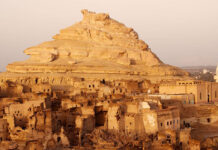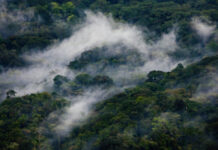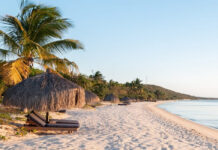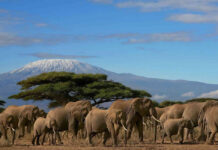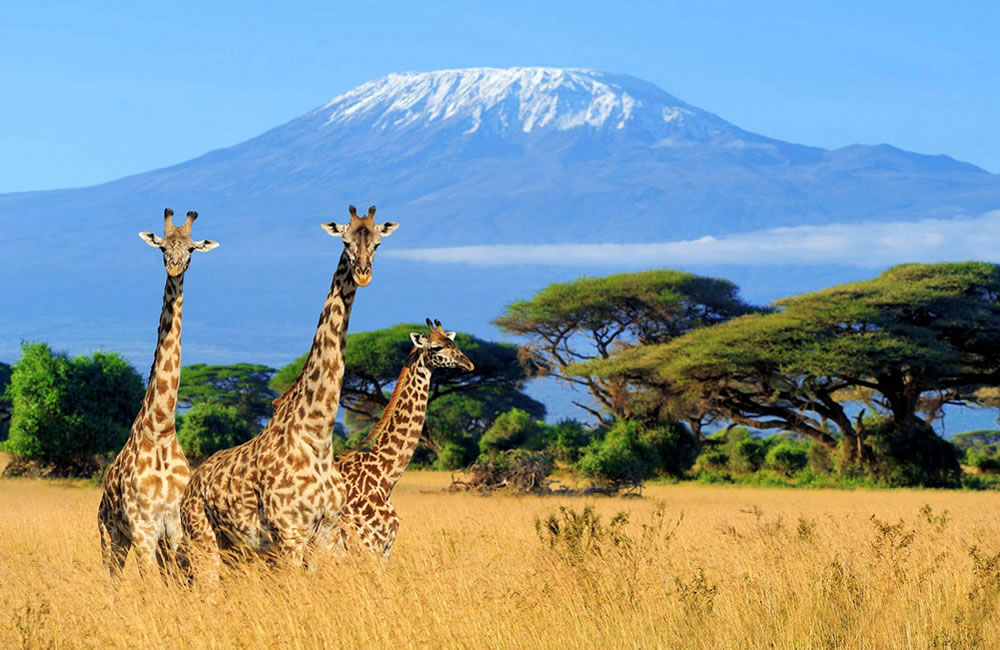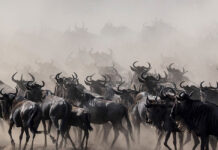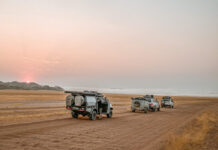An unforgettable journey can be had by combining the thrill of climbing Mount Kilimanjaro with the awe-inspiring experience of a safari through East Africa’s famous wildlife parks. You’ll go from the top of Africa to the middle of the plains, where you’ll see glaciers, elephants, lions, and lively local cultures.
This guide has all the information you need to plan your trip from the top of Kilimanjaro to wildlife safari, including the best ways to get around the mountain, the best national parks in Tanzania and Kenya, and important travel tips.
Climbing Mount Kilimanjaro: Africa’s Highest Peak
Mount Kilimanjaro stands at 5,895 meters (19,341 feet), making it the tallest mountain on the African continent and the highest free-standing mountain in the world. It attracts thousands of adventurers every year eager to test their endurance and witness the breathtaking views from the summit.
Best Kilimanjaro Routes to Consider
| Route | Duration | Highlights |
| Machame | 6–7 days | Most scenic and popular route, great for acclimatization |
| Lemosho | 7–8 days | Quiet, diverse landscapes, excellent for success rate |
| Marangu | 5–6 days | Hut accommodations, moderate terrain |
| Rongai | 6–7 days | Remote, dry route with fewer trekkers |
| Northern Circuit | 9 days | Longest and least crowded, high success rate |
When to Climb:
- Best months: January–March and June–October
- Avoid: April and May (long rains)
Top Wildlife Parks in Tanzania
Tanzania is a wildlife lover’s dream. After climbing Kilimanjaro, many trekkers head straight into safari mode, with some of Africa’s most famous parks just a short drive or flight away.
- Serengeti National Park
- Home to the Great Wildebeest Migration
- Excellent year-round predator sightings
- Vast plains, golden sunsets, and iconic landscapes
- Best time: June to October (dry season & migration)
- Ngorongoro Crater
- A UNESCO World Heritage Site
- Dense wildlife population including the Big Five
- Unique setting inside a volcanic caldera
- Cultural visits to Maasai villages
- Tarangire National Park
- Known for massive elephant herds and baobab trees
- Fewer crowds compared to Serengeti
- Rich birdlife and seasonal migration of animals
- Best time: June to November
- Lake Manyara National Park
- Famous for tree-climbing lions and flamingos
- Diverse ecosystems in a small area
- Great for day safaris en route to the Serengeti
Best Safari Parks in Kenya
Crossing the border into Kenya allows travelers to expand their wildlife experience and visit globally recognized parks known for big game and rich cultural heritage.
- Masai Mara National Reserve
- Northern continuation of the Serengeti ecosystem
- Prime location to witness the Great Migration (July–October)
- Outstanding chances to see Big Cats and other predators
- Guided Maasai cultural tours add to the experience
- Amboseli National Park
- Renowned for elephants against a backdrop of Mount Kilimanjaro
- Great photography opportunities
- Easy access from Nairobi or Arusha
- Best time: June to October and January to February
- Tsavo East & Tsavo West National Parks
- Combined, they form one of Africa’s largest protected areas
- Famous for red elephants and rugged, dramatic scenery
- Tsavo West offers volcanic landscapes and Mzima Springs
- Ideal for off-the-beaten-path safaris.
Planning the Perfect Kilimanjaro + Safari Itinerary
To get the most out of your summit-to-savannah adventure, thoughtful planning is key. Here are a few tips:
Ideal Itinerary Structure
- Arrival in Arusha or Moshi (Rest and acclimate)
- Mount Kilimanjaro Climb (5–9 days)
- Post-trek recovery day in Arusha or Moshi
- Fly or drive to safari parks in Tanzania or cross into Kenya
- 3–6 days safari in parks of your choice
- Optional beach extension in Zanzibar or Diani
Travel Tips
- Combine your bookings with a reputable tour operator who handles both trek and safari logistics
- Fly into Kilimanjaro International Airport (JRO) or Nairobi (NBO), depending on your route
- Get travel insurance that covers high-altitude trekking and wildlife tours
- Pack smart: Your Kilimanjaro gear will differ from your safari clothes. Luggage storage and transfers can be arranged.
Why Combine Kilimanjaro and Safari?
Merging the physical challenge of climbing Kilimanjaro with the emotional and sensory richness of a safari creates a deeply rewarding trip. You’ll:
- Test your limits on the trail
- Experience close encounters with Africa’s wildlife
- Immerse yourself in East African culture and landscapes
- Leave with both bragging rights and profound memories
Final Thoughts: Your Ultimate African Adventure Awaits
East Africa is a unique place to visit, with its sun-drenched plains and snow-capped peaks. This area has everything you could want: climbing Kilimanjaro, seeing a lion on safari, or resting on a tropical beach afterward.
Are you ready to go from the top of the mountain to the grasslands?
Now is a great time to make plans for your trip. Get in touch with a local tour company right away to start making your own Kilimanjaro and trek plans.


